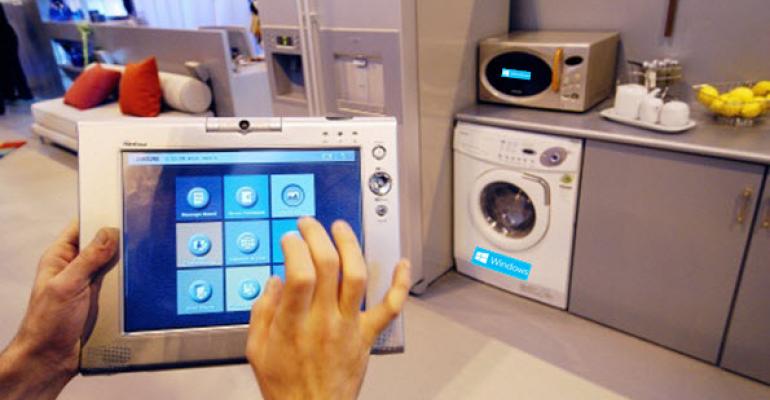The Internet of Things (IoT) is the next booming business, according to a recent report. From wearables to integrated and hidden smart-electronics, everything we own will be deeply connected to the Cloud. As we look toward the year 2020, when this market is supposed to hit full swing, this sounds a bit creepy. But, as we've experienced with other "creepy" technologies, eventually they just become commonplace and we give up privacy for function.
With Microsoft apparently turning corners in its evolution and this market touted to be the "next big thing," what is the company doing to catch the wave instead of being drowned by it like has happened so many times throughout the company's history?
It's clear that Microsoft believes that Windows 10 is its future. Despite the more recent "Microsoft Everywhere" movement, with the company delivering its software across multiple platforms, and new reports showing us on the cusp of another decline in PC sales, Windows does still matter to the company. Windows has always been a bloated operating system, full of unnecessary components and not conducive to smaller form factors, but Microsoft is working to change that according to post yesterday. Windows 10 will release later this year and be available with a shared codebase across PCs, tablets, smartphones – and other devices.
The "other devices" strategy is – interesting. We've seen hints at this already with the company promising free Windows 10 for Raspberry Pi devices. On Monday of this week, the company unveiled Windows 10 IoT to provide more evidence that it has devices in its sights. Windows developers have long been familiar with Windows Embedded versions, supplying code for things like ATMs, and consumers are familiar with Windows Embedded from the occasional bluescreens displayed on them. 95% of the world's ATMS run Windows Embedded. Windows 10 IoT is the new Windows embedded with a twist.
The big differences between the old embedded version and this new IoT version is the persistent connection and smart data consumption. IoT is a mixture of device, Cloud, and Big Data. The device runs the code and creates the connection to the Cloud where data is stored, filtered, and made actionable. Millions of connected devices and sensors exist today and the amount of data traffic and storage is enormous. But, the big problem with IoT now is how to make all that data workable. Each device or sensor runs on its own platform and delivers data to storage in a multitude of different formats. Azure could help provide the fix which puts Microsoft in a very positive position for the next big thing. The company has worked to produce a Machine Learning system that can make sense of the disparate information and create a single language to make the different data formats work together.
IoT is coming for sure and Microsoft wants it to run on Windows. Windows 10 IoT will allow, not just ATMs and the like, but all gadgets, devices, and sensors to participate in a conjoined world. Currently, because of the data format problem, devices can't talk to each other easily. Think about if they could. Your refrigerator would sense when you were low on milk, alert you to pick some up on the way home from work, and also put it on a shared, family grocery list. If another family member had already picked it up, it would be removed from the grocery list and another alert would be sent telling you all is well. There are thousands of applications just in the normal home, just to keep the residents safe and secure.
Currently, there's a slew of such gadgets, but each has its own language, making it difficult for them to communicate. And, there's no clear leader. Recently, Amazon acquired IoT startup 2lemetry. Google, of course, owns Nest, which produces smart-thermostats. So, there is early movement in getting abreast of the market. With Windows 10 for IoT not releasing until later this year, it puts all the major players on equal footing. Who comes out ahead is still being written, but Microsoft has a plan. And, if Windows 10 can make the inroads that Microsoft believes it can, the company could actually be a step ahead. Whatever happens in this space we're definitely gearing up for a new war.





